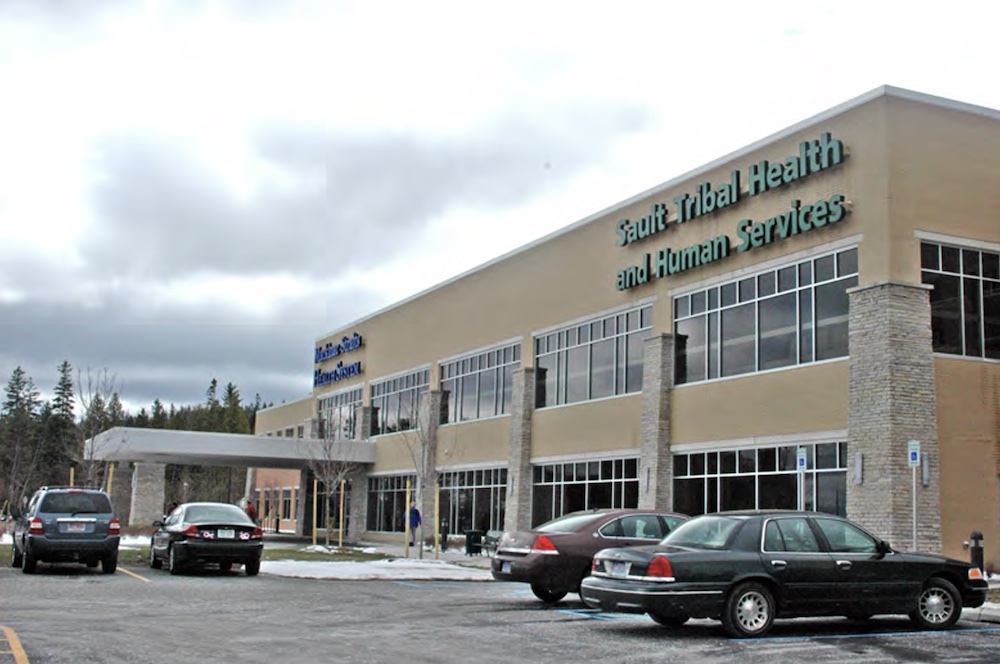
- Details
- By Chez Oxendine
- Health Care
A new report on telehealth usage among the Sault Ste. Marie Tribe of Chippewa Indians in northern Michigan reveals a strong interest in the technology among tribal citizens, despite significant barriers to access.
Conducted in partnership with the nonprofit Connected Nation, the study aims to guide the expansion of telehealth services in tribal healthcare.
The report, titled “Building Telehealth Equity: Insights from the Sault Saint Marie Tribe of Chippewa Indians,” stems from a survey conducted in 2022. Out of 940 respondents, the report found that more than 40% of non-adopters were interested in using telehealth to conduct appointments.
That lined up with existing tribal understanding of the technology’s popularity — particularly among young people — in the wake of COVID-19, according to Sault Tribe Chairman Austin Lowes.
“We already see a good portion of our community starting to use telehealth, particularly among young adults,” Lowes told Tribal Business News. “There’s also a growing interest among our broader population in trying it out and a general feeling that it can provide faster and easier access to basic care.”
Still, resistance to the technology was present: around 35% of respondents didn’t believe telehealth could provide the same level of care or support as an in-person visit.
There was also a question of access: per the report’s survey, around 84% households own a computer, and a similar number subscribe to home internet service. Those numbers shrank to around 70% when focusing on respondents 70 or older.
Tribal leaders have, in past Tribal Business News stories, cited relieving the burden of travel on Native elders as a chief benefit of telehealth.
The Sault Ste. Marie Tribe’s reservation is in Michigan’s Upper Peninsula — often called “the U.P.” — where winter weather can shut down travel at a moment’s notice. That makes the problem of healthcare access even more pronounced, said Chris McGovern, director of research development for Connected Nation’s Michigan branch.
“Telehealth is certainly an issue that comes into unique focus for older residents,” McGovern told Tribal Business News. “When we're talking to people in Michigan's Upper Peninsula, you have a fair distance to a lot of health clinics for a physical trip, and when you think about winters in Michigan's U.P., that becomes particularly challenging for older residents trying to make it through with the weather and everything.”
 Austin Lowe, Chris McGovern
Austin Lowe, Chris McGovern
The area’s rural locations also face issues with broadband access. Per the report, the Upper Peninsula has some of the lowest broadband adoption rates in the entire state. Some remote pockets of Upper Peninsula citizens haven’t yet had fiber or wireless access offered to their homes, meaning telehealth remains off the table for them, McGovern said.
“The services that are being offered now, they are advanced, they've been designed to meet the needs of tribal members, but if a person can't access the internet, or they're not aware those services are available, then they can't take advantage of them,” McGovern said. “There are still a lot of gaps.”
Lowes said another issue was concerns about cost. Many tribal members expressed concerns about whether or not Indian Health Services would cover telehealth appointments, or how insurance would respond. The tribe plans to expand its outreach and education efforts to share that much of remote care is still covered by insurance and federal services.
With proper education and access improved, McGovern said the Connected Nation report revealed a lot of “pent-up demand” for telehealth services for tribal members, even among elders.
“Nearly one in four people older than 65 would be interested in using those tools if they were aware of them, so once again you get back into the awareness, and the need to promote these services in locations that everyone would be able to see, including the elders,” McGovern said.
With that in mind, the report makes five major recommendations to improve tribal telehealth in the Upper Peninsula:
- Tribal health clinics should improve promotion of their online services.
- Clinics should provide education on how to access telehealth prior to an online appointment.
- All healthcare centers — both tribal and non-tribal — should be culturally prepared to handle Native patients.
- Tribal health clinics should create a system-wide online patient portal.
- Policy makers should continue to support broadband expansion to improve access.
With issues of access and education ahead, Lowes said the tribe considered telehealth a priority for their healthcare services.
“The successful integration of telehealth into the healthcare landscape could enhance the well-being of all tribe members,” Lowes said. “As we are developing our new strategic plans we are seeing a significant role in telehealth as we move forward in this digital age.”
